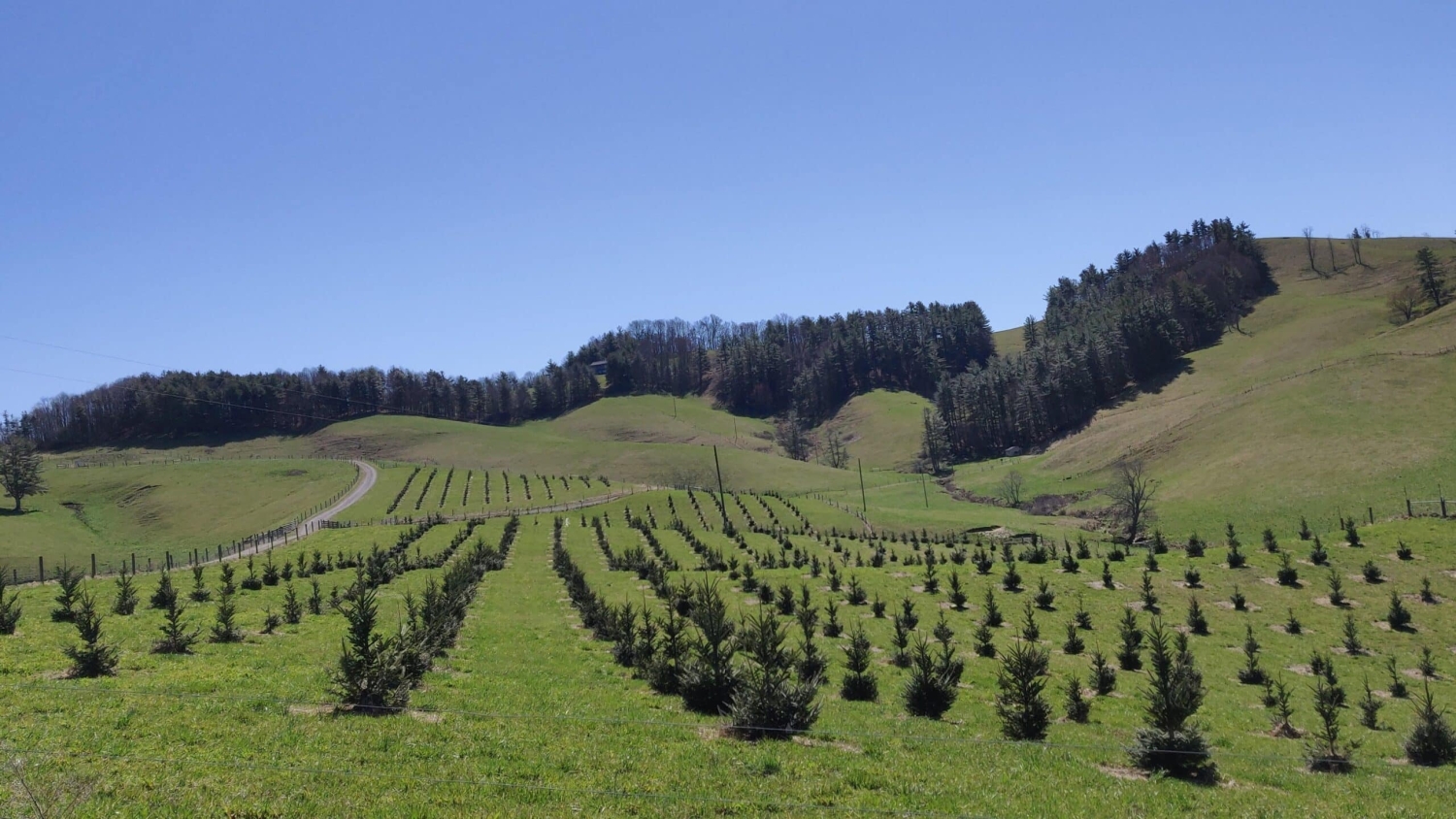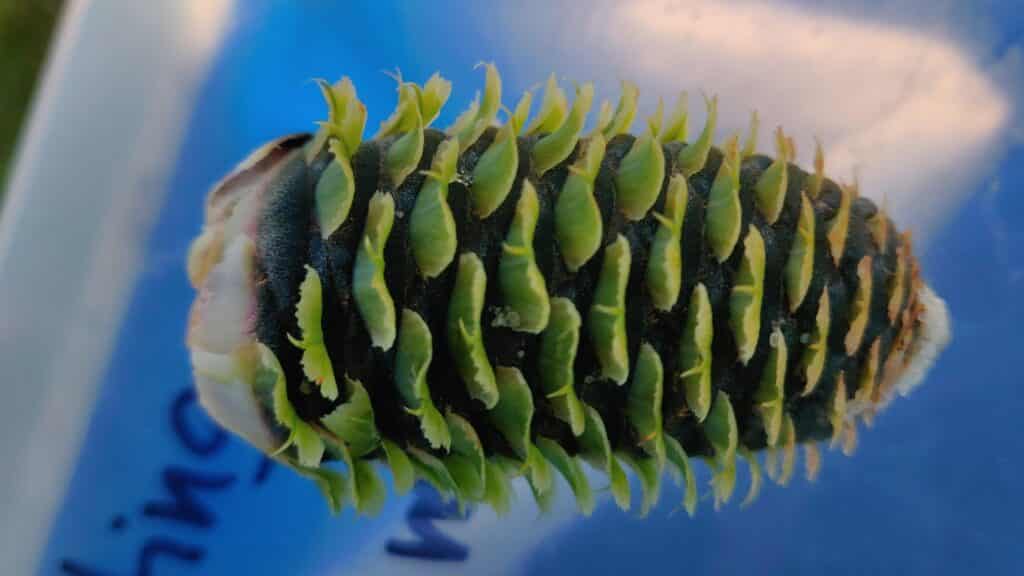Scientists Prepare for Exploding Christmas Tree Seeds

More than 1,000 Christmas trees growing at a western North Carolina research facility have not matured yet, but already, North Carolina State University researchers are making plans to capture and care for their seeds. That’s because the trees’ cones are known to crumble and shoot out their seeds into the breeze.
“The Fraser fir is different than other conifers, like loblolly pines, in that when their cones are ripe, they explode,” said Justin Whitehill, assistant professor of forestry and environment resources at NC State, and the lead researcher for NC State’s Christmas Tree Genetics Program. “You have to be pretty organized and on top of it, and pick them before that happens.”
Whitehill is part of a team caring for the orchard of Fraser fir trees that researchers have selected for their superior appearance, how fast they grow and their ability to retain their needles. The trees are located at the Upper Mountain Research Station in Ashe County, North Carolina – one of the nation’s top Christmas tree producing counties and dubbed by some as “America’s Christmas tree capital.”
Recently, Whitehill joined other scientists and state and university leaders to mark the launch of construction on a new facility that will be dedicated to the care of the trees’ seeds, funded by a grant from the North Carolina Tobacco Trust Fund.
The Abstract spoke to Whitehill about the facility and the role the seeds will play in ongoing efforts by NC State researchers to build a better Christmas tree.
The Abstract: What is a seed orchard?
Whitehill: We grew an orchard of trees so we can collect their seeds. We’re trying to get the seeds so Christmas tree growers in North Carolina will be able to grow genetically improved Christmas trees.
TA: How many trees are there, and when will the seeds be ready?
Whitehill: We have about 6 acres with more than 1,000 trees that we’ve selected. They have the best of the best genetics. They’re only 6 to 8 feet tall, and they’re not yet producing seed. We expect they’ll be commercially productive by 2026.
TA: How did you select these trees?
Whitehill: There are lots of steps in growing the seed orchard. It involved selecting individual trees that are very good at holding onto their needles, but also for how they look and how fast they grow. We tested 30,000 trees, and whittled that down to 25 different types of Fraser fir trees based on their genetic profiles – which we call the genotype. We propagate our best trees over and over again by cloning the tree through a process called “grafting.”
These trees were selected mainly for their form as a Christmas tree and how fast they grow. However, the biggest trait and innovation of this seed orchard is that we also selected for needle retention. When folks bring their Christmas trees home and put them in their living rooms, they don’t want the needles to fall off everywhere. These trees, because of their genetics, are expected to lose less than 1% of their needles after harvest.
TA: Why don’t you have any seeds yet?
Whitehill: Conifers, and Fraser firs in particular, have really long, slow generation times. My predecessor established some seed orchards before he retired. Now my colleague is taking care of them at the Upper Mountain Research Station, watering them and providing space until they’re ready to produce seeds.
TA: When you say their cones blow up, what do you mean?
Whitehill: We say “explode,” but what we mean is that if you touch the cone, it falls apart, and shoots the seeds out. It’s an ecological mechanism to kind of help spread the seed around. It’s kind of annoying when you’re trying to collect the seeds and you miss it by a day or two before it explodes.

TA: What do the seeds look like?
Whitehill: They have a little wing on them, and the seed is at the bottom. If they get caught on the breeze, the wing helps them fly a little further and land in a good spot. Conifers produce more seeds than what they need to survive because most of these seeds get destroyed in the wild. It’s a tough life for the tree to propagate itself, but it’s good for us – we think we’ll have more than enough for Christmas tree growers.
TA: What is the timeline for construction for the seed facility, and what is it for?
Whitehill: We recently received funding through the North Carolina Tobacco Trust Fund to build a 3,200-square-foot brick and mortar facility in partnership with the N.C. Department of Agriculture. We’re just starting to move things forward, and the end date is in November 2026.
TA: What’s next for your genetics work?
Whitehill: We’re constantly building on the work the program has already done to establish elite genetics for the Fraser fir. Now we are digging in even deeper and looking into new and different traits and how they interact and respond to pests or climate impacts. We want to identify key traits or genes that we can use to develop more resilient trees for future generations.
The groundbreaking ceremony for the new seed facility included officials from North Carolina State University, NC State Extension, North Carolina A&T Extension, the North Carolina Department of Agriculture & Consumer Services, members of the North Carolina General Assembly and the North Carolina Tobacco Trust Fund, the N.C. Farm Bureau and members of the North Carolina Christmas Tree Growers Association. The grant was awarded by the North Carolina Tobacco Trust Fund, a program paid for by an agreement with the nation’s largest cigarette manufacturers. The North Carolina General Assembly created the program to lessen the impact to farmers and tobacco-related businesses from the decline of tobacco.
- Categories: